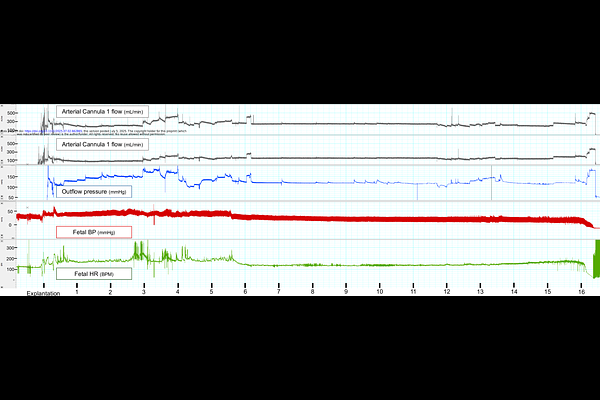Extracorporeal Placental Support in a Sheep's Gravid Uterus

Extracorporeal Placental Support in a Sheep's Gravid Uterus
Salazar, J. H.; Schuh, J. M.; Morelos, A.; Monroy, I.; Abebrese, E.; Stocke, N.; Starkey, N.; Jones, D.; Konduri, G. G.
AbstractBACKGROUND The placenta is a vital organ in animal development, yet its function is understudied. Existing ex vivo placental support models study the organ in isolation, without the uterus and fetus. We report our early experience with a novel model of extracorporeal placental support by perfusing a sheep\'s gravid uterus. METHODS A sheep gravid hysterectomy was performed after cannulating the uterine vessels. The isolated uterus was maintained in a warm crystalloid tank. Oxygenation, electrolyte supplementation, and glucose were provided through an extracorporeal life support circuit, while monitoring the fetal heart rate and pressure. Our primary objective was to establish the feasibility of the model, confirm the ability to transition the organ to ex vivo support (fetal survival for >30 minutes after hysterectomy), and measure the duration of fetal survival after uterine explantation. RESULTS A total of 51 surgeries were performed, and 76% were successfully transitioned to extracorporeal support. Growing experience throughout the study period led to technical adaptations and more prolonged survival. Uteri with a singleton fetus had longer mean survival times, when compared to twins (253 minutes vs. 104 minutes, p=.019). Anemia and coagulopathy were frequently encountered, and most of the uteri had significant clot formation around the placentomes at the end of the experiment. CONCLUSION Using a model of extracorporeal placental support in sheep, we were able to maintain a live fetus within the uterus for more than 16 hours after hysterectomy. This technique is feasible and could provide an avenue to study fetoplacental physiology in an ex vivo environment.